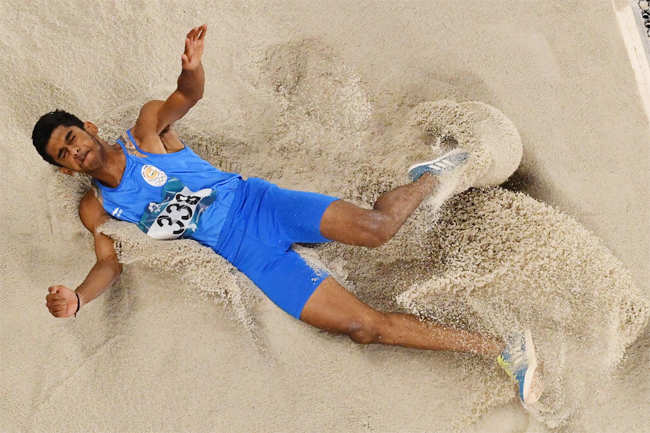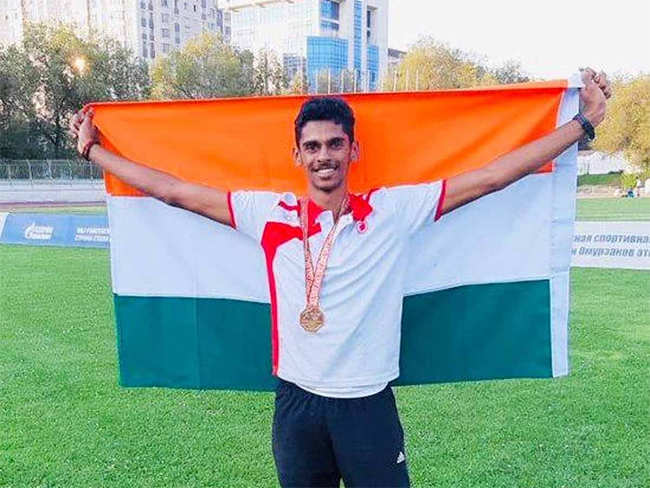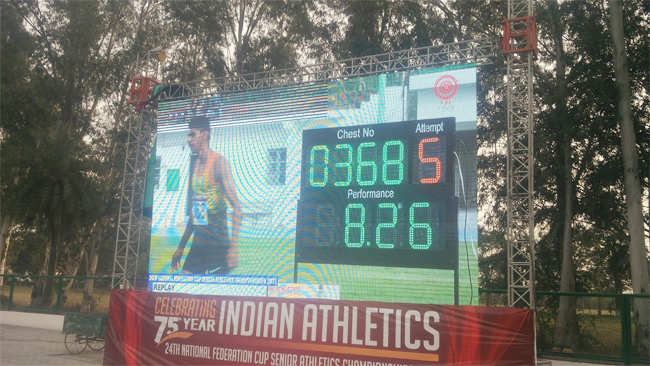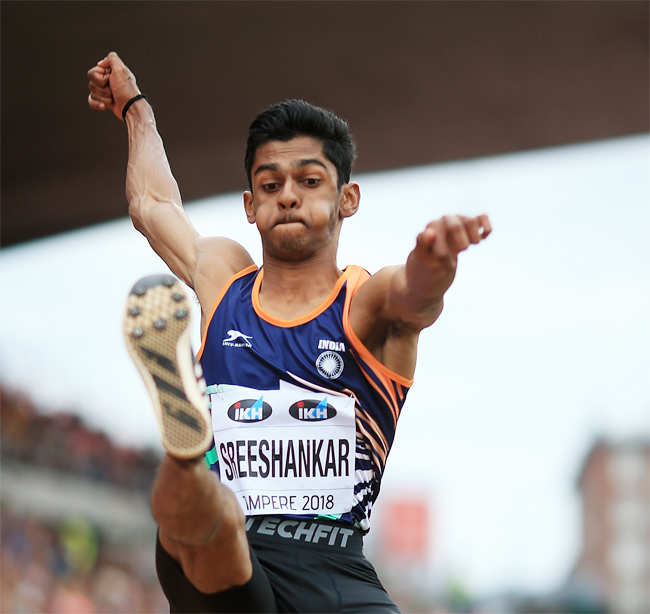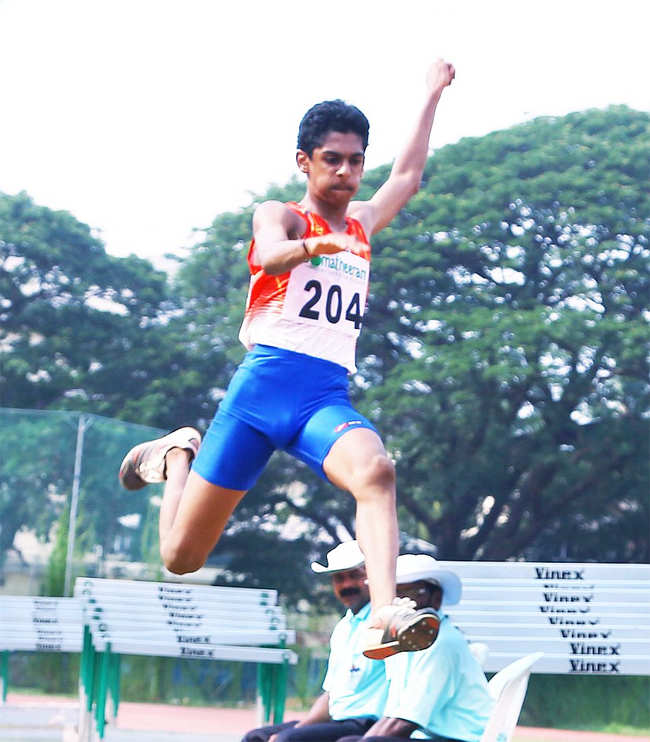NEW DELHI: Around this time a year ago, Achanta Sharath Kamal was good-naturedly bemoaning his advancing years. He was at an age where even water would turn to fat, he had laughed. The pandemic was threatening a global shutdown, with doubts swirling over the hosting of the Tokyo Olympics. It was a strange time for everyone, for Sharath Kamal, mingled with the Oman Open win, a rich vein of form and the approaching qualifiers, was also the fear of cancellations. The latter happened, as did age. Sharath Kamal was 37, he went on 38.
A year later, on Thursday, Sharath Kamal – ranked 32 in the world — became the first Indian table tennis player to qualify for the rescheduled Olympics in Tokyo. It will be his fourth Games.
As younger partner, rival and city-mate G Sathiyan followed him shortly, as did women, Manika Batra and Sutirtha Mukherjee, the elder statesman of Indian table tennis paused, took a breath and reflected on a strange year and how he eventually made most of it. “A positive in all the negatives, yes?” he says. Excerpts:
How’s the feeling now after one year of waiting, uncertainty?
That was the most difficult part, the waiting and uncertainty. Because a year ago, last March, I won the Oman Open and it felt that I’m getting there and getting in shape. The Olympic qualifiers were just two weeks away at that point in time, and suddenly we had to completely stop there and start all over again later. I think, that was really hard, especially since we stopped in March and the lockdown on continued, the stadiums were not open until August.
I felt like I was behind the rest of the world in terms of Olympic preparation for almost six months. Because, nobody else (in other sports) stopped so long, they all probably stopped for two or three weeks. And then they started training back, the Bundesliga was back, all the other leagues were back and just continued to do the job. So, at that point in time, I was feeling very low on confidence. It was difficult times as well, COVID was also mentally a very difficult, a very different thing.
That way, we’ve come off a long way from there to now playing. I think, going into the WTT Tournaments prior to this qualifier and beating world No 16 (Patrick Franziska of Germany), which allowed you to make those last 16 appearances, that gave me a lot of confidence, and now qualifying for the Olympics games. All that prior was actually a process, the main goal was the Olympic Games.
You said you felt that you were behind the rest of the world in terms of preparation, So when you resumed action, did you sense the rest slightly ahead and found yourself trying to catch up?
I really don’t know how we caught up (Laughs). The thing was that we came into a routine in October when we had our first national training camp. It was a 42-day training camp organised by the TTFI, and I think that camp gave us quite a momentum, the right mind-frame, the mindset to restart our preparations. Until then, you know, we were still working from home in a sense, practicing at home, gym training, workouts but nothing really concrete was happening.
Once the camp started, and it became like, ‘Okay, I can completely focus on the table tennis,’ because we were shut out from the rest of the world by being in a bubble. We really didn’t have to worry about Covid, or do I go here, can I go there? We really didn’t have to worry about anything else. Then you we could just continue to do our practice and workouts there. I think that gave us the right frame of mind to getting back into the whole routine and regimen and from there on the Nationals were announced and that gave us something to look forward to, some matches. We hadn’t played a match for almost 11 months, so from there, I figured ‘Okay, now I’m actually I’m not so far away’. The confirmation came after the WTT events where I beat these top-level players.
Till the camp started, were you still practicing on the terrace of your house in that makeshift TT ‘bubble that you had created?
Yes, it was always on my terrace on my T Nagar house. For over 90% of that time, I practiced just did there. Once in a while, I could go into a smaller club nearby, which was only starting to open – the Jawahar Vidyalaya Primary School which is also my younger brother’s coaching centre. But I still preferred to stay on my terrace, because at that point in time, we were all very scared- ‘I don’t want to contract Covid, I don’t want to pass it on to my elders at home or the young ones.’ Things were pretty scary back then, and I knew for sure the terrace was the safest, so I practiced only there.
Also, the stadium where we normally train was still not open for us, the administration used the National Stadium to quarantine the migrant labour who were returning home to their towns and villages during the lockdown.
So, your brother was a sparring partner for the most part?
Yes. Rajath has improved a lot (Laughs).
That’s typical older brother-speak. But when we spoke about a year ago, having just gone into the lockdown, there was this spectre of age catching up if the Olympics got postponed, and that you’ll be one year behind. You’re 38 now, and suddenly, you’re going to your fourth Olympics. What’s the feeling like, do you feel younger or do you feel the same?
I think the break has given me a good sense of time. It’s given me a good idea of time to work on my weaknesses. So a positive in all the negatives, yes? In the longer run, it all happens for the good. I was able to work on my physical attributes. I know for a fact, if I need to keep up with the youngsters, I need to be fast, I need to be quick. I can’t be as quick as they are, because of the dynamics of the sport and the physiology of it, but at least if I’m able to match up, and then I have the experience on my side, situations too, both mentally and psychologically which I can summon. So we had the time to get down to very minute details on to seeing which parts of my body are functioning properly, which are not. We did almost two days of biomechanical analytics – me and Ranjith Srinivasan, my strength and conditioning coach — together. And that helped me understand my own body and helped me to get back stronger. And that is also the reason why I’m actually quite toned now.
Being in the lockdown, was there any particular set of exercises or training that you were probably doing for the first time in all these years of your playing career?
There were a lot of things. The first thing was home workouts. The watchman at my colony used to wonder what am I doing, you know, jumping off the parapet walls, and climbing onto something else. So, those kind of funny things would happen in the beginning. (Laughs)
Then, I got back to yoga. Yoga was something I did a long time ago when I was younger, but lost touch with that since I went to play in Europe. This time, I actually understood how important and how easy it is to control your body and mind together in a few actions. It was that flexibility that helped me with actually coming down during those negative periods of the Covid break. That helped me a lot.
Apart from that, we did a lot of exercises in the gym, where I had to teach my muscles to work in a certain way. For example, if my gluteus muscles or my hamstring muscles have been working over the years in a certain way, the muscle memory kicks in. I had to teach my body to this body to work in another way, so that some other muscle groups are also working together. So it’s the whole kinetic movement of the body, was what we looked into. And that has helped me a lot, may be being a slight faster.
What is Team Sharath Kamal like?
Rajath, my brother and sparring partner is my table tennis coach. Ranjith Srinivasan of Sports Dynamix, a former BCCI trainer is the strength and condition coach. My mental coaches are Gayatri Madkekar and Dr. Swaroop Savanur. Achsah Ratnakumar from Qua nutrition is my dietician.
In this long career of yours, how many phases have there been of the same person?
I think there have been at least three. Until 2011, you know that was the young Sharath Kamal going up the graph completely. No lows at all. Very few lows, just ups and up. of
In 2011, I hit a slump I go down on my rankings to 90th in the world. The ball changed, the blades had changed, technique had changed, I had to work on my technique, first introduce myself to a backhand technique. So I started slowly, it got better. From 90th, I came up, I scaled up to 32 in the world.
And then by 2015, I had my career threatening hamstring injury for almost six to eight months, came back.
And then now this one is the third.
Was the uncertainty greater during the injury phase, or was it greater during the last one year?
No, the injury was very, very hard. It was quite depressive and really hard for me to get back into
the whole thing because I didn’t know if I’ll be able to play or not. I didn’t know if I’ll be back, even be able to lead a normal healthy lifestyle, I wasn’t sure.
I think I’m pretty lucky that from that situation I could get back into actually playing. Because, let alone performing even playing was something that was threatened. See, your entire the identity is table tennis, and if you’re not able to do that, you lose your identity really hard.
The last time when we spoke, you mentioned the need for a mental trainer in these times, especially for younger sportspersons…
When the Covid broke out, no one really knew how long it would last. We didn’t know if we could get back to practice. What would we be doing? So it did take a toll on our mental health. I think that was where the mental coaches come right into play and help us through the whole process.
And, not just in those times, but also during, say, this tournament run in Doha. Now, I’ve almost been six weeks on the road now, and have played dozens of matches by now. So match after match to keep your concentration, to be focussed. And the most important one was in the end, the Olympic qualifiers, so to have that focus until the end, the mental coaches help a lot.
This leaner version of Sharath Kamal, was it the same thing which made you push Sathiyan in the 4-3 game in the Doha qualifier?
I should have won that match, man, I should have won it. I was three to eight, six to eight…
Was he surprised by your appetite for a fight? When I asked him about it, he said, ‘Sharath is always a great fighter. I was ready for a tough match…’
(Laughs) But, you know, more than Sathiyan, it was the taking down world No 16, Franziska and the manner of it, that was definitely quite reassuring. The way I could move, the way I could stop, it was just fantastic. When I looked at the video again, I was like, ‘Wow, this is exactly where I want to be.’
It’s really nice to see when the work has paid off. And I will continue to do so for the Olympic Games as well.
It’s after a year’s break, at your age, it’s a significant gap. Okay, you’ve trained and prepared well, but when you go to meet a world No 16, what is it that you tell yourself personally?
Many times it’s experience, no? So you try and see the reality. Many times you feel like maybe I can’t beat this guy because he is good in this, good in that and I’m not good in those areas. And that is where I have to often step myself up and say, ‘No, I am also good enough.’ Once the match starts it is 0-0, he doesn’t start with a 5-0 lead, so let’s figure it out. Let’s not give them that extra importance before that much. But with age it comes up, you know. So that is where I have to constantly keep fighting with myself to say, ‘No, it is possible, let’s go in there and figure it out.’
You’ll be at your fourth Olympics now. How do you understand this in the larger Indian context?
Personally for me, this is going to be my best Olympic Games, because I’ve never been so highly ranked at any of these other Olympic Games before – No 32 in the world, and probably I’ll go up a few places after my performance in March. So, yes, this is going to be performance-wise, and result-wise, my best Olympics. So, I’m looking forward for it. And I hope I will be able to prepare as I want for the Olympic Games, and of course, with age, with the experience I have, I should be able to handle the stress that is created due to these big games. The Olympic Games, I’ve played them before, so I should not go in thinking, ‘Oh, maybe this is probably going to be my last Olympic Games, this is something big. I have to just take it as ‘Okay, this is a big stage. And normally I do well in big stages, so I’m going to be a dangerous player for anybody.
That must be a nice place to be in, right? At 38, do you sense the younger people looking at you with new respect, if not to use the word, fear?
More than respect, I think, they’ve understood that, ‘Okay, Sharath has his space, and we all have ours. So we don’t need to take his place.’ See, many times in a team, there’s a thinking that you’ll have to take the No 1 spot or take somebody else’s place. You really don’t have to. This is what the younger guys have understood now. ‘No, I cannot take the place of Sharath Kamal. And Sharath Kamal is not looking at taking our place.’ So we all work together collectively in doing well at the international level. That’s something what I have put into their attitude, I guess.
Internal competition is what helps us drive ahead, but in the larger picture, the international competition is what we should be looking at. I think that way the youngsters have also come up really strongly, especially with Sathiyan, the space what we both give each other is fantastic.
It’s a healthy rivalry you seem to have going with Sathiyan, it’s good to see you feeding off each other… Do you think Sathiyan’s emergence has also probably helped you find a second wind in a sense?
Yes, this is what I’ve been saying in the other interviews as well. The youngsters are keeping me pushing myself ahead. If they wouldn’t have come in so much, then maybe my motivation will not have stayed so high. And with a stronger team, you have fun to try and achieve newer goals.
If it was just me by myself, then over a period of time, I would have been like, ‘Okay, fine, what what more can I do?’ but then as a team when you’re doing well, that helps you stay motivated. And these young guys, they keep me moving, they keep me pushing, I push them, they push me. So, in turn, it’s healthy movement for all of us.
Was there a phase when you found yourself kind of totally alone as an Indian on the international circuit?
The period from 2007 onwards, I felt like ‘I’m all alone out there,’ until 2014 or 2015, when these youngsters began emerging on the international circuit. That period was hard, because I was all alone, doing everything by myself.
In 2018, you had planned to leave the game after the Commonwealth Games, but then you got an Asian Games medal and that plan changed…
I kept it open. Even after Tokyo Olympics, I’ve actually kept it open. Now it’s going into Birmingham (Commonwealth Games) in 2022 and the Asian Games. So as long as I have fun, my will to keep myself motivated and try and achieve new and higher targets. I want to continue doing so because I think it’s not just helping me but it’s helping the Indian table tennis and the other youngsters as well.
Is it true that you’ve left the decision to your wife?
(Laughs) There’s a lot to decide. I’d have to take her consent at well, it’s not possible otherwise. With two growing up kinds, she has a say in it. Yeah, I’d have to check that with my wife.
What’s more on the bucket list?
The Olympic medal. Yes surely, the Olympic medal. That’s the only thing. You know, if I can, I would be really happy if I get that. And if I don’t get it, I will still be happy because at least I’ve had a shot at it. A realistic shot — that’s because after the Asian Games medal in 2018, you start to think, ‘Okay, if you can get an Asian, yes, well, then the Olympics is also possible’.
What kind of plan do you have for the coming few months before the Olympics?
We’ve been talking with the federation and trying to invite a few sparring partners from abroad, because traveling now is going to be very difficult for all of us with all the quarantine and everything. But still, we try and travel abroad to Europe preferably, because Asia, East Asia have very strong quarantine rules. So we’ve made up a plan, where we’ll mix training in Chennai, training in the National Training Centre, training abroad, and probably try and play a few friendly matches, because the ITTF might not have many matches organised here on due to the COVID reason, except perhaps only a couple of tournaments. So these are small plans, which we’ve made by ourselves, and hopefully we can get it up and running.

